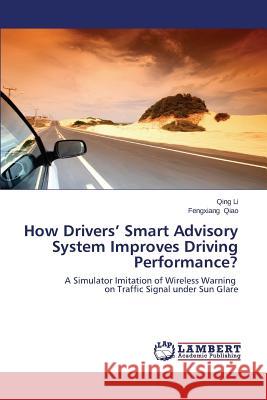How Drivers' Smart Advisory System Improves Driving Performance? » książka
How Drivers' Smart Advisory System Improves Driving Performance?
ISBN-13: 9783659571930 / Angielski / Miękka / 2014 / 120 str.
As an innovative advancement of Intelligent Transportation System, the Drivers' Smart Advisory System (DSAS) provides wireless information of traffic control as a supplement for conventional signs and signals, which are somehow blocked by obstacles (e.g., trees and trucks) or nature disturbances (e.g., fogs and sun glare). This book specifically evaluates driving performance of the DSAS using sun glare as an example. The system implication was investigated through a driving simulator test. Statistical analyses were applied to examine the negative impacts of sun glare, evaluate the compensation of the DSAS to sun glare, and assess the implication of the DSAS when there is a sun glare. Four performance indexes were measured including mean approach speed, half kinetic energy speed, brake response time, and brake response distance. Impacts of social-demographic factors (gender, age, education background, and driving experience) were also scanned. Analytical results show that the DSAS can basically improve driving performance to normal visual situation particularly for brake response time and distance, and mitigate sun glare effects especially for left-turn and through movement.
As an innovative advancement of Intelligent Transportation System, the Drivers Smart Advisory System (DSAS) provides wireless information of traffic control as a supplement for conventional signs and signals, which are somehow blocked by obstacles (e.g., trees and trucks) or nature disturbances (e.g., fogs and sun glare). This book specifically evaluates driving performance of the DSAS using sun glare as an example. The system implication was investigated through a driving simulator test. Statistical analyses were applied to examine the negative impacts of sun glare, evaluate the compensation of the DSAS to sun glare, and assess the implication of the DSAS when there is a sun glare. Four performance indexes were measured including mean approach speed, half kinetic energy speed, brake response time, and brake response distance. Impacts of social-demographic factors (gender, age, education background, and driving experience) were also scanned. Analytical results show that the DSAS can basically improve driving performance to normal visual situation particularly for brake response time and distance, and mitigate sun glare effects especially for left-turn and through movement.











